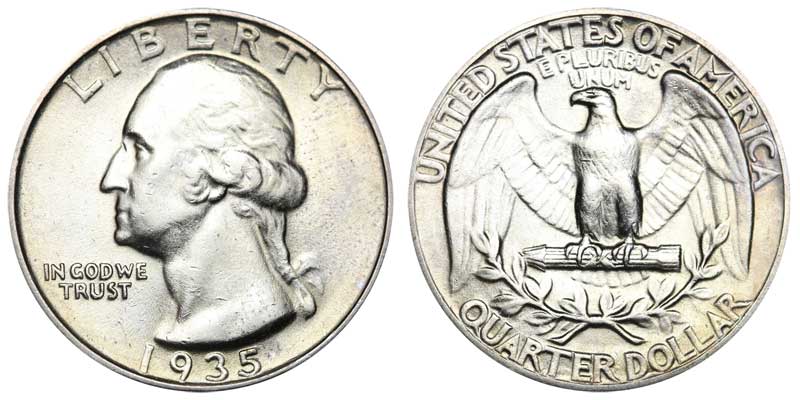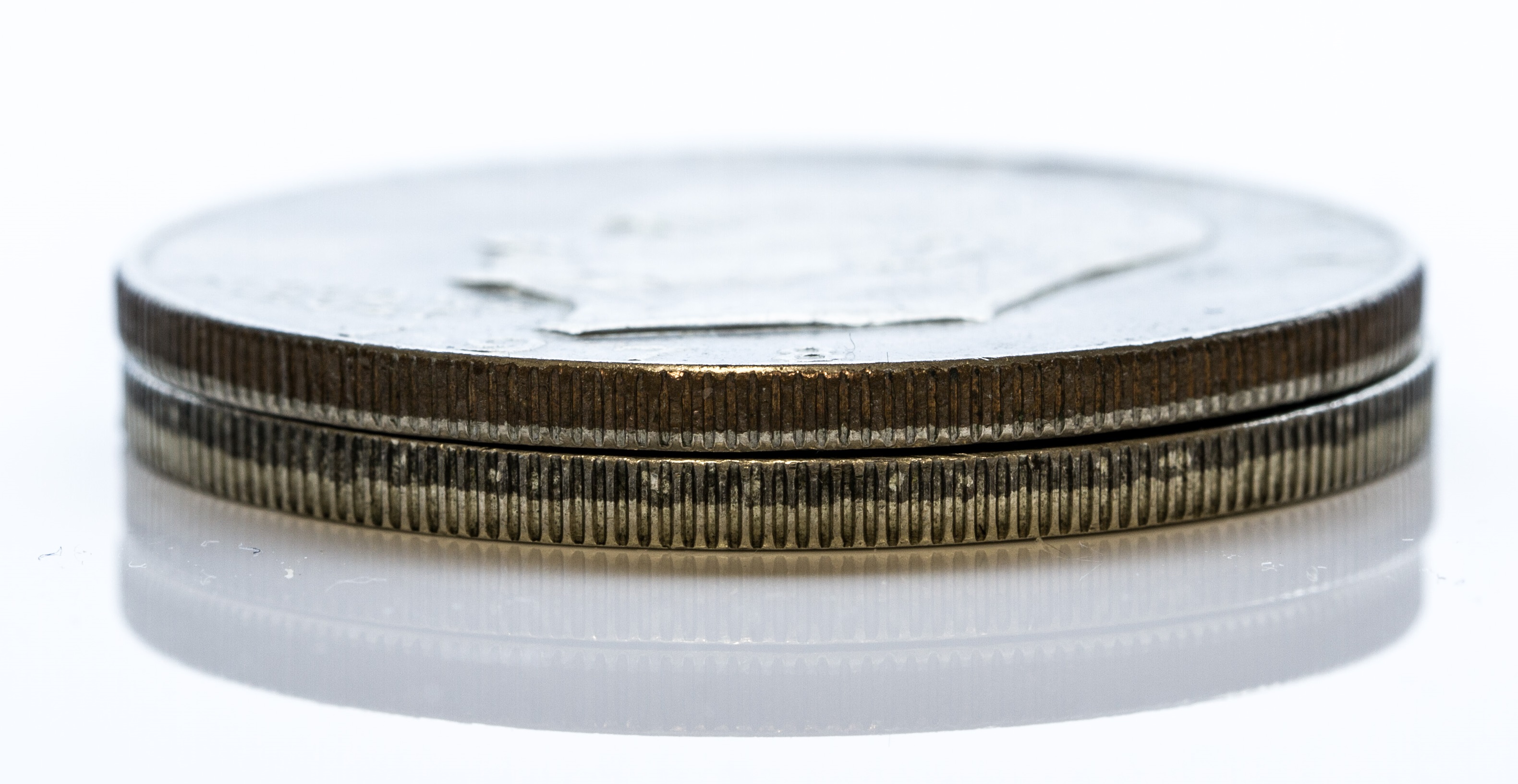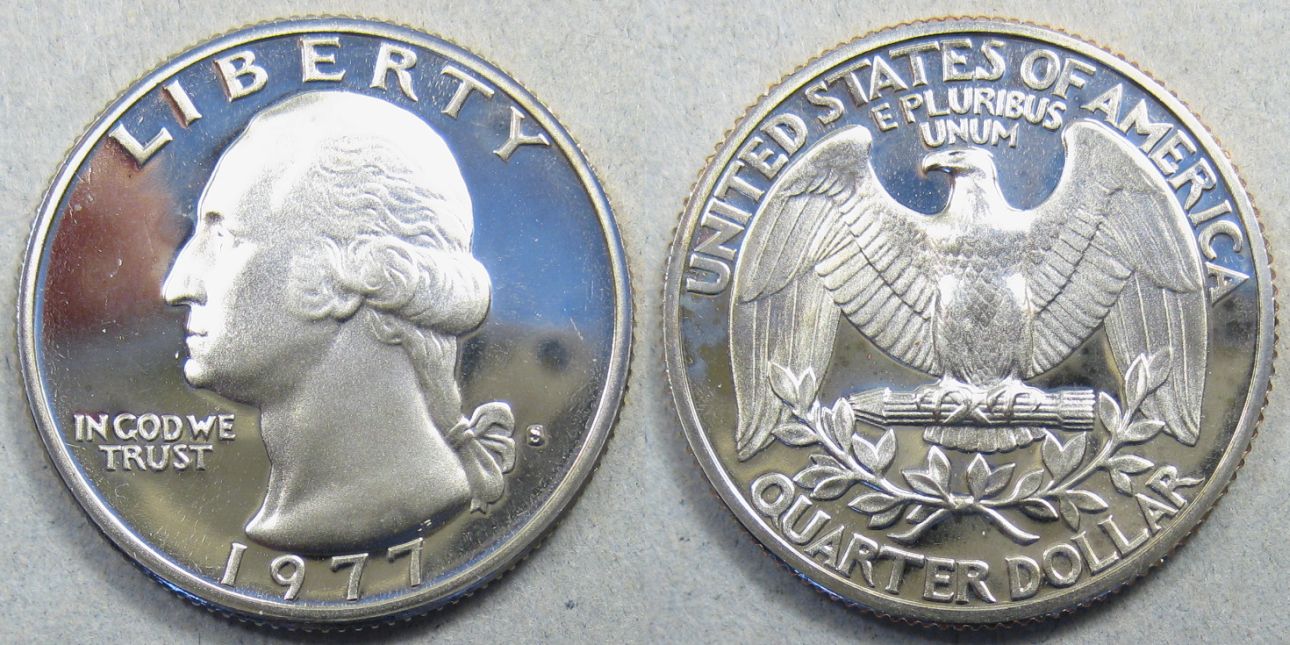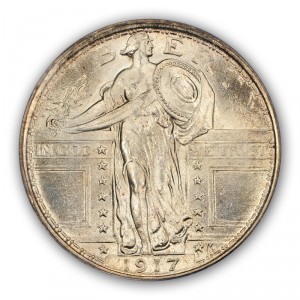What Quarters Are Silver? - Silver Quarters
Quarters minted in the U.S. during the years 1964 or earlier are all made from 90% pure silver. This is also known as .900 fine silver.
Shop For Silver Quarters

Image source: USA Coinbook
There are a few other instances where your quarter may contain silver. Keep reading to learn how to identify whether or not you have a silver quarter.
Which Quarters Are Silver?
The simplest method to find out if your quarter is silver is to check the date. It will appear on the front (obverse) of the coin.
Any quarter with a date earlier than 1965 will be silver.
You can also check the edge (the "side") of the coin. If any copper shows through, it means it's not silver. This might be helpful for quickly scanning a large stack of quarters for any potential silver ones.

Clad and silver coins viewed from the edge
There are two other features that may indicate your quarter contains silver:
- If it is a proof coin with a date of 1992 or later
- If it is a bicentennial coin (1976) with an "S" mintmark
Silver Proof Quarters
The U.S. Mint began releasing Silver Proof Sets that used 90% silver for the coins each year since 1992. These silver proofs are minted in much smaller numbers—typically less than 1 million annually—than the standard clad proofs.

Proof Washington Quarter
It can be difficult to tell the silver proofs from their non-silver proof counterparts without the original government packaging. Your best bet is to consult a numismatist (i.e. a coin expert) when in doubt.
Silver Bicentennial Quarters
Bicentennial quarters were produced specially for the 200th anniversary of the Declaration of Independence. You can tell the difference because of the dual date "1776–1976" as well as the drummer pictured on the back side (reverse) of the coin.
Not all bicentennial quarters are silver, though. Look for those with an "S" mintmark, meaning they were struck at the San Francisco Mint.
Each of these 1976-S quarters are made from 40% silver for a total of 0.0739 troy oz (roughly 2.3 grams) of pure silver content.
Value of Silver Quarters
Figuring out the melt value for your silver quarter is a straightforward calculation.
Each 90% silver quarter contains 0.18084 troy oz of fine silver. All you have to do is multiply this number by the spot price of silver to find the melt value.

1917 Standing Liberty quarter
If you have a rather old quarter (before around 1930), however, then it likely has a higher collectible value—such as the Standing Liberty quarter picture above.
FAQs About Silver Quarters
Here are a few frequently asked questions about silver quarters. They can help guide you if you consider buying silver.
Are 1965 Quarters Rare?
No. You might think these coins are valuable because 1965 was the first year quarters were made in a copper-nickel alloy. It's true that the "first year of issue" for any type of coin usually gets collectors excited.
However, in this case, the new clad coins weren't widely collected. As a result, 1965 quarters aren't rare at all.
How Much Is a 1776 to 1976 Quarter Worth?
It depends on the condition of the coin and where it was made.
Most 1776–1976 quarters are worth between $5 and $10 in Mint State. They are known as "Bicentennial quarters."
Follow this link for a complete list of Bicentennial quarter values.
How Many Silver Quarters Make an Ounce of Silver?
Each silver quarter contains 0.18084 troy ounce of pure silver.
That means one ounce of silver is equal to about 5.5 silver quarters. Since you can't have half of a coin, we can round up and say it takes 6 silver quarters to make a troy ounce.
Read more about which coins are silver from the experts at Gainesville Coins:
How Much Is A Silver Dollar Worth?

Everett Millman
Everett has been the head content writer and market analyst at Gainesville Coins since 2013. He has a background in History and is deeply interested in how gold and silver have historically fit into the financial system.
In addition to blogging, Everett's work has been featured in Reuters, CNN Business, Bloomberg Radio, TD Ameritrade Network, CoinWeek, and has been referenced by the Washington Post.
